Becoming a good founder requires a lot of effort, and there are no shortcuts.
Author:Jim
Compiled by: Shenchao TechFlow
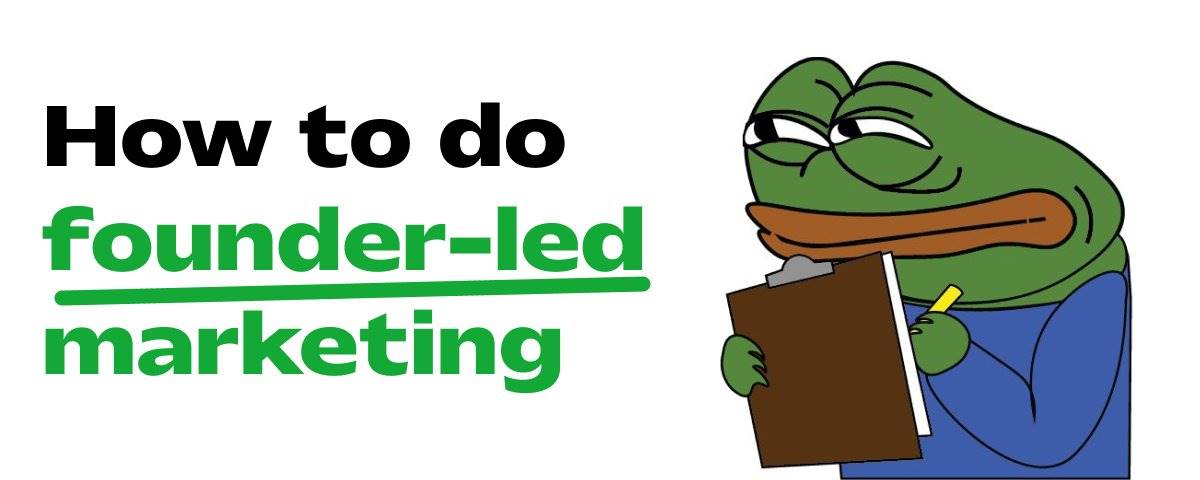
Think about the last time you saw an ad.
You might have been tired, your mind was empty, and you just wanted to watch a good cooking video on YouTube, but one popped up. The 90-second commercial is about things like washing powder.
Or, you’re listening to a very useful podcast and you’re suddenly interrupted: Here’s news from sponsors. rdquo;
Your whole body instantly tenses, your heart beats faster, and then you press the skip ad button crazily, wanting to get rid of it immediately.
We’ve all done this before, and we always have. Since the first businessman shouted goods in the market, people have been bombarded with advertisements and have been trying to ignore them.
So if we all agree that advertising is terrible, why do you think others will like your ads?
Oh, you don’t think you’re advertising?
In fact, the definition of advertising is an announcement to promote a product in public places.
So every time you tweet about your project on Twitter, it’s an advertisement.
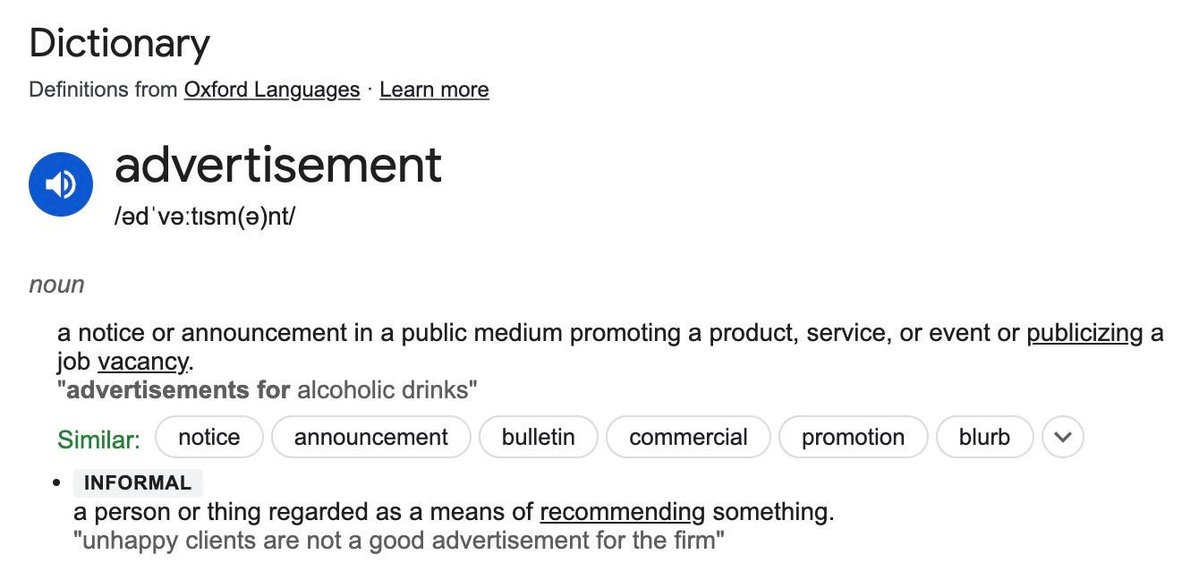
However, most founders always make the same mistake.
They think founder-led marketing is talking about their projects on Twitter, so they keep advertising, but the results are ignored. They tweeted for a week, found no one interacted, and finally gave up. (Don’t blame the algorithm, it’s not its fault.)“”
I made the same mistake when I first launched Catalyst.
I tried my best to promote my product, but no one was interested.
I spent a lot of energy writing tweets but I was completely ignored, which was a really bad feeling. I even wanted to quit Twitter completely and focus on being a good product manager for Catalyst.
At work, I switch back and forth between writing functional requirements documents and writing tweets. Gradually, these two intertwined in my mind, and finally made me understand:
I’m going to stop thinking like a marketer, andStarted like aproduct ManagerThink that way. I need to create tweets from the user’s perspective that can solve problems for my users(followers).
This is the key to breaking the founder’s marketing code.
Become the product manager for your content
A Product Manager is the voice of users, understanding their needs and ensuring that the product satisfies them.
Becoming the product manager of your content means getting to know your followers very well and providing what they really want.
Think about it: Why do people go to Crypto Twitter? Their purpose is nothing more than:
-
Want to make life better;
-
Seek entertainment.
For point 1, they may want to find some valuable information (such as trading advice) on the timeline. As for the second point, they may just want to smile and relieve the pain after experiencing a whole day of fatigue from losing money.
This is what you need to makecontent type。If you can do both at the same time, that’s even better.
However, most founders always screw up and they can’t suppress the urge to promote themselves. They are not thinking about what my followers need?& rdquo;, but how can I let others know how good I am?” rdquo;
Your content is either useful or interesting, otherwise it’s garbage.
Let me tell you how I did it.
I try to share my experiences as a founder (like this article!) to douseful。
At the same time, I also do so by publicly expressing my dissatisfaction with the current state of the crypto industry and the existential anxiety I feel every day to dedicate my career to this absurd industry.interesting。
Coincidentally, these two types of content perform best.
Of course, I can’t always post content that has nothing to do with the project. I need to connect content to my project because I have growth goals to achieve and the company needs to survive. Otherwise, my team and investors will wonder what I do every day.
This begs a million-dollar question:How to find a balance between providing value and promoting products?
I have found two key principles for making promotional content truly work:
(1)If you must sell, do it in moderation
In fact, there is research on how to balance sales and non-sales content (sometimes called the give-and-take ratio).
For example, for every 60 minutes of broadcast time in a TV program, about 13 minutes are advertisements. To put it into perspective, the ratio of promotion to non-promotion is about 2:7 (for friends who are not very good at mathematics, it is 13/(60 – 13)).
Looking at Facebook, they are a little more gentle, inserting 1 ad in every 4 posts, so the ratio of promotion to non-promotion is 1:4.
As for Twitter, especially in circles with changeable styles like Crypto Twitter (CT, CryptoTwitter Community), I personally prefer to reduce the proportion of sales. I use a 1:9 strategy, which means that 10% of the content is sales promotion and the remaining 90% is to provide value to everyone.
But just knowing when to sell is not enough. If your sales method is not attractive enough, all your efforts will be in vain. The real secrethow to sell。
(2)If you must sell, do it in a tasteful way
My favorite ads don’t even look like ads.
Like interesting ads like Duolingo’s humorous commentary on the Lone Ranger deal or their Super Bowl ads; or ads that move me to tears, like this unofficial Nintendo ad; and someAdvertisements so strange that people have to share with friends。
The best advertisements are entertaining, so entertaining that people forget they are being promoted. It’s even so strong that people are willing to spend their free time watching ad collections on YouTube.
So how do you do this?
Adopt product manager (PM) thinking again——What do your users really like?
If you don’t have any data, start with what you like as a reference. In most cases, if you are making a consumer-facing (B2C) product, you and users may have similar points of interest.
Here is what I did in the CrossCats project:
I noticed that our Discord channel is full of cat emoticons, and I especially loved watching Adventure Stooges when I was a kid. So we combined the two to create Cupcakes and their team.
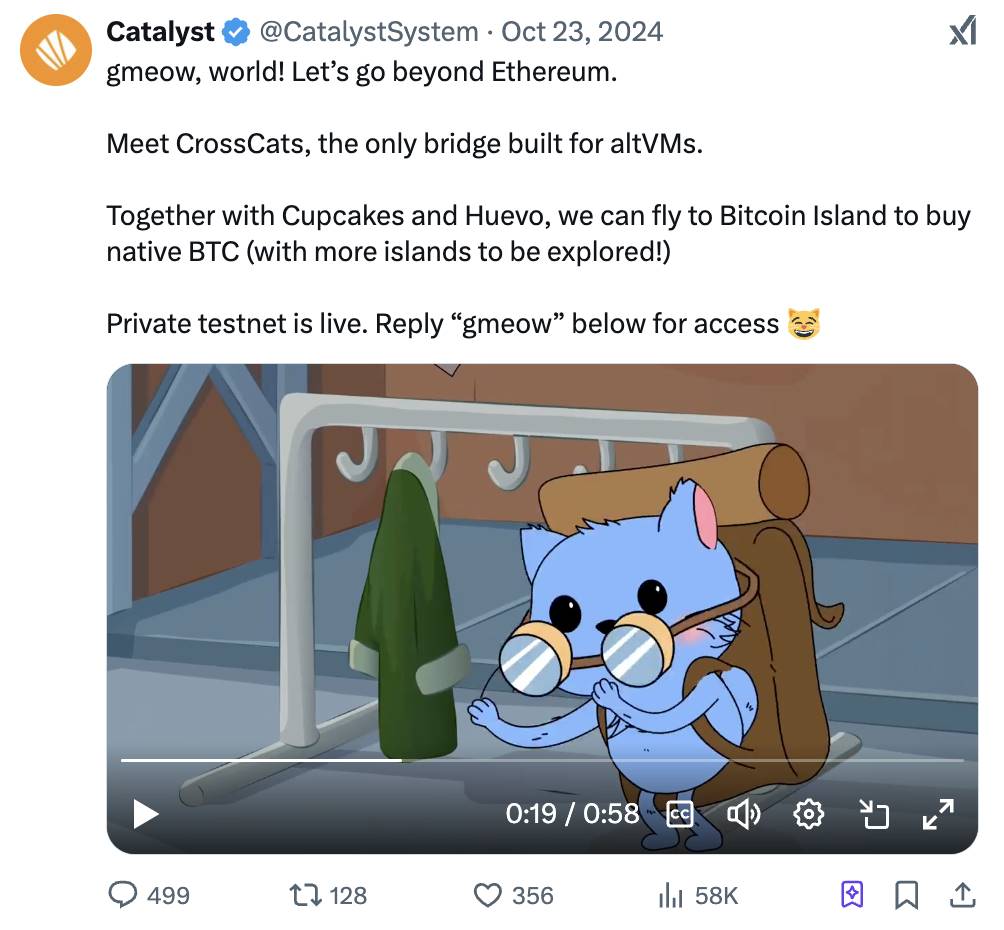
(See tweet for details)
Excellent founder marketing practices
But to be honest, I am still a long way from the benchmark of founder-led marketing. So let’s take a look at the founders who really do a good job.
Before starting, one thing is very important:Don’t try to replicate what successful founders are doing now。Their influence has formed a positive cycle, and basically anything they send will become popular.
For example, the way those ambiguous short sentences are used to create popularity will only work if you already have a certain fan base.
Instead, you should study the success stories of founders when they were less famous.
For example, Rushi became popular by becoming a supporter of Move and writing in-depth articles on why Move is significant in the context of trends such as parallelization and inscription.
Another example is Keone, who used a similar strategy to mine to document his experience building the Monad project, including everything from recruitment to community building:
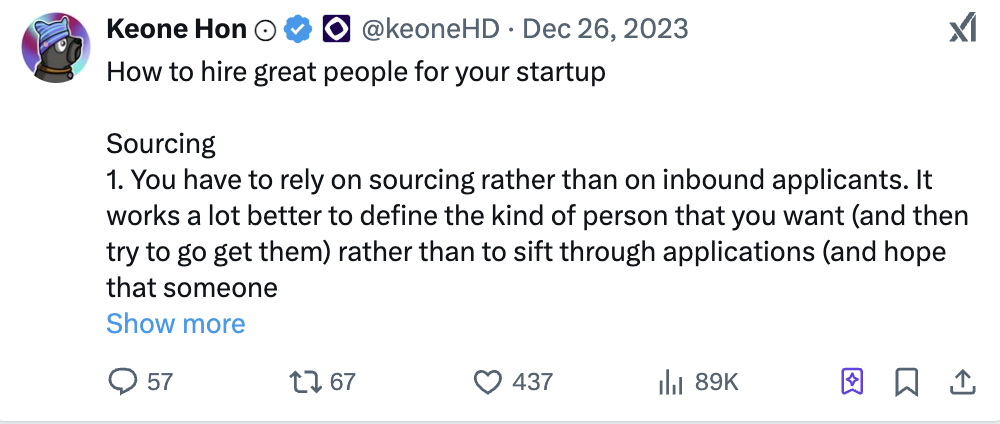
(See tweet for details)
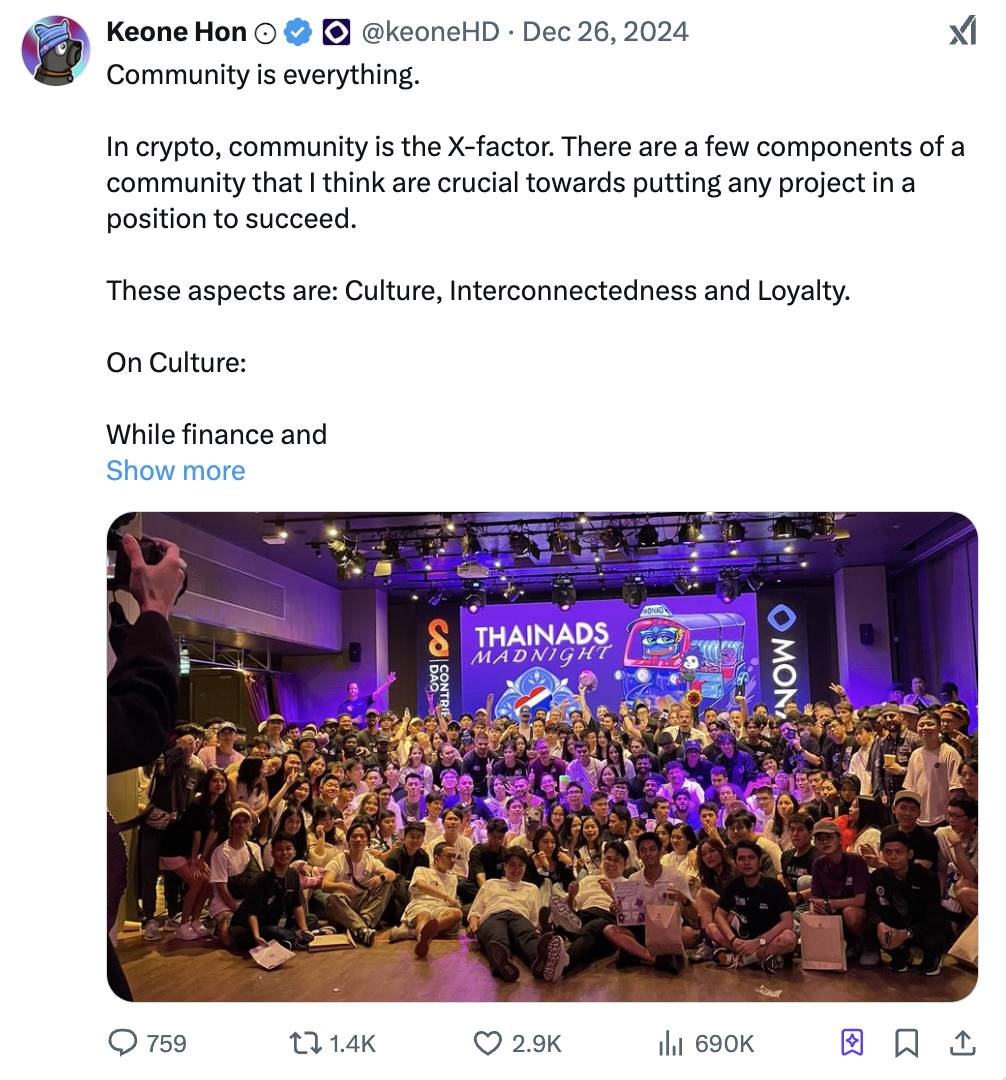
(See tweet for details)
Have the spirit of not admitting defeat
I hope this article will help you resolve your doubts as a founder about creating high-quality content so you won’t waste time publishing content that no one cares about.
But remember that just knowing these methods does not mean success.
If you really want to stand out in founder-led marketing, then you have to persevere. This is a long process of hard work, and the results will not be achieved overnight.
If you don’t believe me, you can follow the excellent founders I mentioned and open their tweets. They publish high-quality content many times a day and continuously output value.
Don’t treat this as a short-term task that cannot be completed in a week or a month. You need to make it a habit to invest at least 1 hour a day for years.
If you are really willing to put in the effort, the rewards are huge. With a strong personal brand, you will find it easier to recruit, collaborate, and raise funds.
If you think this is too hard, accept the fact:Becoming a good founder requires a lot of effort, and there are no shortcuts. Not everyone can become a good founder, because not everyone is willing to work hard for this.
But if you really want success, you will definitely go all out.
Welcome to join the official social community of Shenchao TechFlow
Telegram subscription group: www.gushiio.com/TechFlowDaily
Official Twitter account: www.gushiio.com/TechFlowPost
Twitter英文账号:https://www.gushiio.com/DeFlow_Intern



